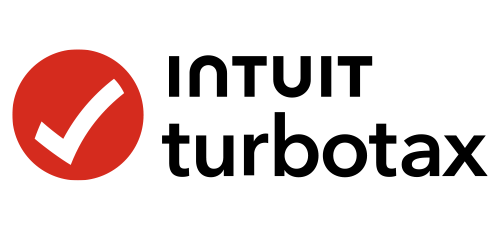Losses and How to Claim Them on Your Taxes
TurboTax Canada
October 21, 2020 | 1 Min Read
Updated for tax year 2025


A new way to file your business taxes is here!
To help offset the financial burden of different losses, the Canada Revenue Agency allows taxpayers to write off losses against portions of their income.
There are three major categories of losses:
- rental losses
- capital losses
- business losses.
The CRA defines each of these losses differently and has a unique procedure for writing off each one.
Rental Losses
If you rent out a home, an apartment, a room in an office, or another type of rental property, you are required to declare the money collected as income.
However, if your expenses such as advertising, maintenance, and insurance exceed the amount of rent you have collected, you can claim a rental loss. For example; if you collect $12,000 in rent over the course of the tax year but you spend $15,000 in expenses, you can declare a rental loss of $3,000. You can apply this loss against your current year’s earnings, and in some cases can claim the loss against a previous year’s income.
To calculate your rental losses, you must fill out Form T776 — Statement of Real Estate Rentals. This form includes sections for you to enter the amount of rent collected and relevant expenses, thereby helping you to calculate your losses.
If you have rented out your property to a relative for less than fair market rent, you do not have to declare that rental income in most cases. However, you also cannot claim a rental loss.
Additionally, if you have unpaid rent owed to you at the end of the tax year, you may deduct the unpaid rent from your gross rental income. In order to claim unpaid rent, you must have proof that you attempted to collect the rent without success.
Capital Losses
If you sell capital property such as land, jewelry, securities or a range of other items at a loss, you may be able to claim a capital loss on your taxes. Capital losses from these properties have to be applied against capital gains from the same categories. If there is no gain in current year, loss can be carried back up to 3 years to the year that had gain, or carried forward indefinitely in anticipation of gain.
Calculating your capital loss is fairly straightforward. Simply take the proceeds of the disposition (amount you received), and subtract the property’s adjusted cost base and any expenses incurred in selling it.
The adjusted cost base of a property is the cost you paid for the property plus legal fees, commissions and other expenses incurred to purchase it. For example, if you sold a capital asset for $100,000 with an adjusted cost base of $105,000 and you spent $400 advertising the sale, your capital loss would be $5,400.
However, you cannot necessarily claim that amount as a loss. Every year, the CRA sets an inclusion rate defining how much of your capital gains or losses can be reported. The capital gains inclusion rate is one-half. In this example, you would be able to claim $2,700 in capital losses from your loss of $5,400.
If the transaction was done with foreign currency, you can use the same formula to calculate your capital loss. However, instead of calculating the amount you can claim and converting the foreign currency into Canadian dollars, you must convert each value of the formula using the exchange rate the day the particular transaction took place, and then do the subtraction.
To claim capital losses, complete Schedule 3 of your return and transfer the amount to line 12700 of your Income Tax and Benefit Return.
If your capital loss exceeds your capital gains for the year, you may carry the loss back to one of the three previous years. To apply for a loss carryback, you must include a Form T1A Request for Loss Carryback with your return. Most tax preparation software, such a TurboTax, generates this form automatically based on your losses. You do not have to send in amended returns for the years to which you want to apply the extra loss.
Business Investment Losses ABIL
If you suffer a loss from either unpaid debt or selling shares from a small business corporation, you do not have to declare these losses as capital losses. Instead, you can declare them as allowable businesses losses. Neither of these items need to have been disposed of for cash. In fact, you may be able to claim a business investment loss (ABIL) if you disposed of these items for nothing.
In order to qualify, the debt must be considered bad or unrecoverable at the end of the tax year. Alternatively, if you are claiming a business investment loss for shares, the small business corporation must have gone bankrupt, be insolvent, be in the process of winding up, or have no fair market value.
Unlike capital losses which may only be applied to capital gains, your allowable business losses can be applied to your sources of income. If your loss is more than all of your other income, the difference can be carried forward or back as a non-capital loss. Complete Chart 6 of the T4037 Capital Gains form to determine the loss amount, then report the loss on line 21699 and line 21700. Report the total ABIL on line 21699, and report the allowable portion to claim based on your income on line 21700.
TurboTax Premier offers an easy step-by-step guide to report your investment income and claim your losses or carry it to another tax year. TurboTax Self-Employed helps you easily manage your rental and business earnings, expenses, and claim the losses. However, if you feel a bit overwhelmed, consider TurboTax Assist & Review, Self-Employed, and get unlimited help and advice as you do your taxes, plus a final review before you file. Or, choose TurboTax Full Service for Self-Employed* and have one of our tax experts do your return from start to finish.
*TurboTax Full Service is not available in Quebec.
Related articles

© 1997-2024 Intuit, Inc. All rights reserved. Intuit, QuickBooks, QB, TurboTax, Profile, and Mint are registered trademarks of Intuit Inc. Terms and conditions, features, support, pricing, and service options subject to change without notice.
Copyright © Intuit Canada ULC, 2024. All rights reserved.
The views expressed on this site are intended to provide generalized financial information designed to educate a broad segment of the public; it does not give personalized tax, investment, legal, or other business and professional advice. Before taking any action, you should always seek the assistance of a professional who knows your particular situation for advice on taxes, your investments, the law, or any other business and professional matters that affect you and/or your business.








